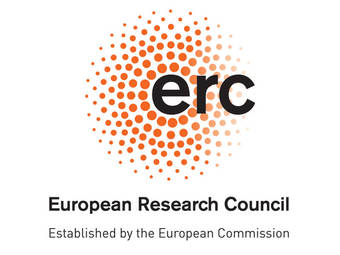Prestigious ERC grants for research projects in physics
Three researchers receive EU funding
2017-09-05 – News from the Physics Department

Every year the ERC awards grants in various categories. Starting Grants are intended for talented early-career scientists, and include funding of up to €1.5 million. Proof of Concept grants are provided to scientists who wish to investigate whether their ERC research projects have the potential to yield marketable innovations – an aspect of great interest to TUM, as an entrepreneurial university. With the latest awards, TUM has now received a total of 79 ERC grants, 20 of which involve the physics department.
Dr. Ante Bilandzic
The aggregate state studied by Dr. Ante Bilandzic existed in nature only for a very short time: for a fraction of a millisecond after the Big Bang. Quark-gluon plasma is a state of matter in which so much energy is present that even the elementary particles quarks and gluons can move relatively freely. Quark-gluon plasma can now be artificially produced, for example in the Large Hadron Collider (LHC), the world’s largest particle accelerator, at CERN in Geneva. That is where Ante Bilandzic will collect the data for his ERC-funded project. Since upgrades to the LHC were carried out in the winter of 2014/15, it has been possible to produce quark-gluon plasma at even higher energy levels. Bilandzic is an expert in the analysis of the enormous quantities of data produced in these experiments and is hoping to use new methods he has developed to study the detailed properties of the quark-gluon plasma and in particular its flow behavior.
Dr. Ante Bilandzic has been a research associate with the Dense and Strange Hadronic Matter research group headed by Prof. Laura Fabbietti since 2015. He has been analyzing data collected at CERN for about 10 years.
Learn more about Ante Bilandzic and his ERC project.
Dr. Johannes Stigler
Chromosomes change their structure over the course of the cell division cycle. They have the familiar X shape mainly just before and during cell division. In the interphase, between successive divisions, they take on other shapes. This has far-reaching consequences: The structure of a chromosome is one of the factors determining which parts of the hereditary material become active or interact. It is known that certain proteins are responsible for chromosomes taking on certain shapes. We do not yet know what exactly happens in these processes. This is the starting point for Dr. Johannes Stigler’s ERC project. He plans to use microscopy-based techniques to study how chromosomes “get in shape”. The procedure is so precise that Stigler can observe the behavior of individual molecules.
Dr. Johannes Stigler is a research associate at the Chair for Molecular Biophysics.
Prof. Dr. Johannes Barth
Physicist Prof. Johannes Barth has been selected for a Proof of Concept Grant. He laid the foundation for his current project, SoftBeam, with the ERC Advanced Grant he received in 2009.
For SoftBeam, the team working with Prof. Barth and Dr. Hartmut Schlichting developed a method for controlling highly sensitive molecules in a vacuum. Such procedures open up new possibilities for manufacturing nanomaterials or for analyzing materials through mass spectroscopy. In both applications, important molecules and biological building blocks are available only in a dissolved state, but must be handled under vacuum conditions. There is still no universally applicable device for this task. Conventional methods can affect the integrity, and thus the functionality, of molecules that are sensitive to changes in temperature or the extraction of water. In their method, the scientists are using a controlled, intense, extremely pure and precisely targeted ion beam that can be generated from any soluble substance. With this development, they plan to close a gap in the nanotechnology and analytical chemistry markets.
Johannes Barth has been Professor of Molecular Nanoscience & Chemical Physics of Interfaces at TUM since 2006, and is currenty the dean of his department.
Links
- ERC-Grants at TUM
- Research group Fabbietti
- Research group Rief
- Research group Barth
- SFB 1258 “Neutrinos and Dark Matter in Astro- and Particle Physics”
- European Research Council
- ERC Starting Grants
- Desk
- Paul Hellmich, Dr. Johannes Wiedersich
Contact
- Dr. Ante BilandzicDense and Strange Hadronic MatterTechnische Universität MünchenJames-Franck-Str. 185748 GarchingTel.: +49 89 289-12563E-Mail: ante.bilandzic@tum.de
- Dr. Johannes StiglerTechnische Universität MünchenJames-Franck-Str.1, 85748 GarchingE-mail: stigler@ph.tum.de
- Prof. Dr. Johannes V. BarthTechnische Universität MünchenJames-Franck-Str. 1, 85748 Garching, GermanyTel.: +49 89 289-12608E-Mail: e20office@ph.tum.de